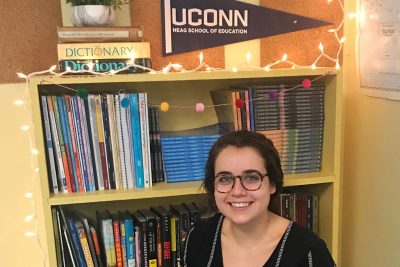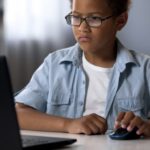The Day (Barry Sheckley, a retired faculty member and former department chair, writes a commentary about learning during a pandemic)
Understanding the Impact of Ed Tech to Prevent ‘COVID-19 (Academic) Slide’
UConn Today (Devin Kearns, who is part of a study to prevent falloff in academic progress, is quoted)
What We Know About Online Learning
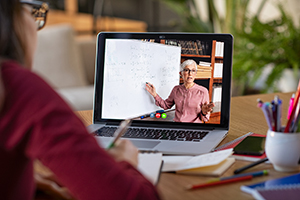
The situation with COVID-19 has challenged many school systems to consider how to extend their teaching and learning into virtual settings from home. Sometimes called “distance learning” because the teacher and the students are not in the same room, this form of virtual teaching and learning has a rich history and several forms. The use of technology, particularly the internet, to support remote learning is nothing new.
The use of technology, particularly the internet, to support remote learning is nothing new.
Learning at a distance has been part of schooling around the world for many years. Most people on the African continent learned English by weekly radio broadcasts. Some will remember “correspondence” schools that would send instruction and exams using the U.S. mail, and later added audio and video cassettes. Universities have long explored distance learning by linking their main campuses to remote sites and scheduling rooms where remote students listened and posed questions to a “live” synchronous broadcasts of a professor’s lectures. States like Alaska and Hawaii, and even the Florida Keys, have long been challenged to support the instruction of schools in very remote sites and have experience with online learning in virtual environments. In addition, members of the military who are often stationed in remote sites or at sea have also benefited from online instruction, typically needed for promotion and job qualification.
The Neag School’s Two Summers MA program in Learning Technology, a program for practicing educators, has been fully online since 2006. Courses in this program are offered through a learning management system (LMS) called HuskyCT, a version of Blackboard®.
What We Know
Online learning is different from face-to-face instruction. Perhaps the worst versions of online learning are face-to-face classes that have simply been recorded or “canned” for online distribution. Often these simple translations of lecture to video fail to take advantage of the best and most interactive features of a virtual learning environment.
Online learning requires new reading/writing literacies. Reading on the internet does not start on page 1 and move page by page to the end of the chapter. Instead, reading is nonlinear. Clicking on hyperlinks can take a reader far afield from the author’s intended logical trajectory. Likewise, co-authoring text in a synchronous writing environment can create many forms of tension, as others revise your text or even push your work off the screen as they write in the shared space. This simply means the traditional literacy skills from school may not apply to reading and writing online. Neag School Professor Emeritus Don Leu’s work has shown that there is zero correlation between being a good reader in school and being able to comprehend online text and results from online search engines.
Online learning is not for every student. Online learners need to be self-starters since they cannot rely on a teacher to organize their activities or supervise their behavior. This is often called “self-regulation” in the research literature. Self-regulation includes time management and metacognitive monitoring of progress and need for help, but also includes finding appropriate workplaces with quiet, lighting, and access to needed online resources.
The current wide use of distance learning may lead to many creative and interesting possibilities for teachers and researchers to explore.
Online learning relies on analytics to guide teacher monitoring of student learning. Rather than watching students as they work, online teachers need to monitor data, such as who has logged in, when, and for how long. This enables the teacher to tell if students are accessing the appropriate material and can suggest whether they are making progress or experiencing problems.
As an example, learning science research has demonstrated that there are times of day and night during which online test takers perform best; right after lunch or dinner is not as good at mid-morning or later in the evenings. Other studies have shown how online instructors need to be sensitive to different indicators of productivity and participation. Another example is Garrison’s (2000) Community of Inquiry model, which highlights three different types of presence in online learning environments: Teacher Presence, Social Presence, and Cognitive Presence, which help teachers establish relationships with students and online classes a whole, to establish safe and trusting environments where all students’ contributions are equally valued and respected.
Future Possibilities
It should go without saying that this is not a comprehensive list of all things a teacher could or should do when teaching online. Frameworks like SAMR and TPACK can add to guidelines for online courses such as Quality Matters; yet even with these resources, there is much more about selecting tools that fit with pedagogy, content, and the affordances of various apps and program features. In short, it is not optimal to be thinking about designing an online teaching/learning experience in the middle of a face-to-face class. Sometimes the best that can be done is support review of prior learning with digital worksheets, and keep in touch with students with synchronous Facetime check-ins. That is clearly not the best test of what could be an amazing online learning experience for our students. Yet we likely can expect that the current wide use of distance learning may lead to many creative and interesting possibilities for teachers and researchers to explore.
Michael Young is a professor of educational psychology and coordinator of Neag School’s Educational Technology Program.
Virtual Instruction for Gifted Students
Virtual Instruction for Gifted Students
National Association for Gifted Children (Neag School alumna Jessica Stargardter pens commentary about providing online learning for gifted students)
Be Aware That This Crisis is Far More Trying For Some Than Others
The Day (Montara Tomasetti, a master’s student in special education, pens commentary about the coronavirus)
CAS Conversations: A Podcast for School Leaders by School Leaders
Connecticut Association of Schools ( Educational leadership doctoral student Garrett Dukette is interviewed)
Creativity in a Coronavirus World
Editor’s Note: The following story originally appeared in Psychology Today.
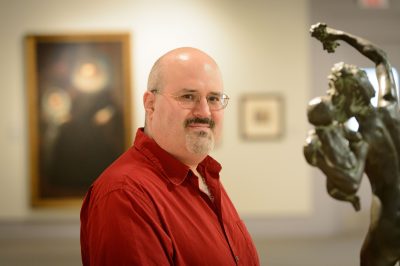
These are grim and scary times. A tolerance for ambiguity is often considered to be a hallmark of a creative personality, but the complete uncertainty we are facing would daunt even the most open of people. Like many, I have been trying to seek out silver linings.
One of them, I believe, is that we are seeing an increase in everyday creativity. It is important to first note that this benefit is not enjoyed by everyone. The brave workers on the front line—from doctors to people in the supply chain—have less free time, not more. People whose jobs are at risk (or lost) are focused on more immediate needs. But many who are working from home, with no commutes or in-person meetings, find themselves with more time on their hands.
Anyone who spends time on social media has likely noticed that hidden between the political rants and virus fears is a smattering of more interesting posts sharing someone’s latest craftwork, dessert, or quip. People with school-age children are finding some harsh realities, such as that some of the online classes are much shorter than “real” classes (not to mention the absence of playdates, piano lessons, and track meets). Many families are engaged in more activities. Some are enjoyable, such as jigsaw puzzles and board games. Other activities are specifically creative. A few have gone viral (perhaps not the best word to use in these times), such as the family singing a song from Les Misérables or some dance-off videos. Most represent small — but important — moments of creativity.
My view is that creativity has a dimmer switch, growing from a tiny bit creative to a little creative to creative enough to light up the whole room.
The examples of everyday imagination you see on your feed or timeline may not strike you as creative-with-a-capital-C. Clever family photos, meme creation, or Zoom singalongs may, indeed, not be the Mona Lisas of our time. It is important, however, to not let such a comparison diminish their value. If creativity is a light, it does not have an on/off switch. It is not helpful to think of things as “Creative” or “Not Creative.” My view is that creativity has a dimmer switch, growing from a tiny bit creative to a little creative to creative enough to light up the whole room.
Consider the Four C Model of Creativity, which I developed with my colleague and friend Dr. Ron Beghetto. In this model, we see creativity starting at mini-c. Mini-c is small, insightful moments of creativity that are meaningful to the creator. These Mini-c bursts may not be important to anyone else (in some cases, they may not even be shared with anyone else), but they still matter. Imagine you’re spreading cream cheese on a toasted bagel and you realize you’re getting bored. You decide to sprinkle a little cinnamon on top. You like the new taste. The next day, you continue to experiment. Are you the first to think of this addition? Of course not. Although we generally agree that creativity is both new and task-appropriate/useful, a creative act can be new to you (much like all of the old movies some of us are watching).
If you continue being interested and are enjoying the creative activity, then you keep practicing and receiving feedback. Maybe your doodling has progressed to the point where you are making cartoons and sharing them online. Perhaps you make your private YouTube channel of punk Sondheim covers public and start getting solid viewer response. In the pre-social-distancing world, you may have reached the stage of playing music at the local coffee shop or bar, displaying your art at nearby fairs, or trying out your new technique for teaching algebra to your classroom. This stage we call Little-c, or everyday creativity.
With enough time, deliberate practice, focus, and improvement, you may advance to Pro-c, or expert-level creativity. You have published your book about kiwi cultivation, received your scientific grant to study how a femur can experience emotion, or recorded your first digital album of ukulele music. You have entered the field and it is not only other local people who can appreciate your efforts but also the experts and gatekeepers. It is important to note that we are describing a typical path; revolutionary creators may never be accepted by a field because their works are so challenging or disquieting.
Sometimes, a creator’s contributions outlive them and continue to influence a field and be enjoyed or used for generations after their death. Instant examples include William Shakespeare, Albert Einstein, or Wolfgang Mozart, but also think of Frida Kahlo, George Washington Carver, Jerome Kern, or Stanley Milgram. You may not know all of their names, but you likely know their life’s work. This creativity is Big-C, or creative genius.
The higher-level creativity we see in quarantine times is absolutely vital.
We often think about creativity in comparison with Big-C: “That’s a good melody, but it’s not Gershwin tune,” or “That’s a nice painting, but it’s not Picasso.” This tendency is unfortunate — there are so many positive aspects of creativity for the creator and others, and these beliefs will potentially cause someone to not bother pursuing a creative activity.
In coronavirus times, however, the balance shifts. As I teach my now-online classes in creativity at the Neag School of Education at the University of Connecticut, I am struck by how many students talk about finding time to return to writing or cooking or drawing. Yes, they are still doing classwork (and spending time worried and stressed, of course), but more downtime and more constraints on what can and cannot be done means they can choose what to do with their time. Many are choosing creativity, just as people of all generations and groupings are across the world.
The higher-level creativity we see in quarantine times is absolutely vital. Some renowned actors, singers, and comedians are using their gifts to do at-home performances that are lifting people’s spirits. Some accomplished inventors and business people are shifting gears to try to make masks or ventilators using fewer resources. Most essentially, the top doctors and scientists around the globe are working toward treatments and, ideally, a vaccine.
But do not let the existence of possible superstars stifle your own creativity. You don’t have to be working for a cure or entertaining millions for your ideas to have value for yourself, your friends, or the larger community. Creative activities can help you reduce stress, handle trauma, and improve your mood — all of which are particularly helpful at the current moment.
James C. Kaufman is a professor of educational psychology at the Neag School of Education. For more information on his writings and work on creativity, visit his website.
New Online Graduate Certificate on Educating Bilingual Learners
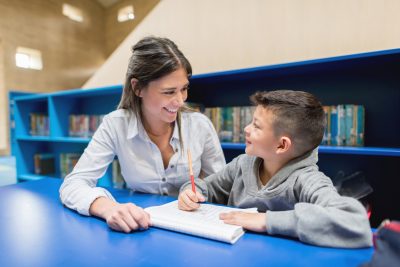
Throughout her career as an educator, associate professor Elizabeth Howard says she has always seen teaching and supporting English Learners as a shared responsibility. Her vision led to the development of the Neag School’s Educating Bilingual Learners online graduate certificate program. The program offers general education teachers and other school personnel an opportunity to learn how to better support English Learners in their classrooms. The four-class, 12-credit graduate certificate can be earned fully online, making it accessible to educators across the country.
“The whole point of this program is to support people who don’t want to be specialists — people who love being a secondary math teacher or love being a school psychologist — but they have a lot of English Learners in their school and they want to be effective with them,” says Howard.
The program offers general education teachers and other school personnel an opportunity to learn how to better support English Learners in their classrooms.
English Learners are the fastest-growing population in U.S. public schools, according to the National Education Association. This rise puts increasing demand on English as a Second Language (ESL) specialists and calls for general education teachers and other school personnel to be knowledgeable about how to support English Learners in their roles. Howard says that even in the best-case scenario, English Learners do not spend more than a few hours a week with an ESL specialist.
“Most of the time, our English Learners are not with ESL specialists, and so if everyone doesn’t have a baseline understanding of how to help support them, they are not going to succeed,” she says.
Designing Diverse Coursework
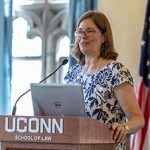
The idea for the Educating Bilingual Learners Graduate Certificate came as part of a previous grant proposal that Howard had drafted with former Neag School faculty member Erica Fernández. When denied funding for the grant, Howard continued to pursue the idea. Neag School assistant professors Michele Back and Danielle Filipiak, as well as Howard’s former graduate student Eileen Gonzalez, have been instrumental in helping develop the certificate courses.
The program consists of four graduate-level courses designed to cover several content areas:
- Multicultural Education: building a foundational understanding of cross-cultural issues and the assets that English Learners, their families, and their communities bring to the classroom
- Educational Linguistics: focusing on the linguistic assets of bilingual learners and the language acquisition process
- Sheltered Instruction: using a scaffolded approach to support students in a classroom where the instruction is happening in a language other than their home language
- Language Diversity and Literacy: combining the themes discussed in the other three courses, with a specific focus on literacy development for English Learner students
“The whole program is designed to think about things from an asset-based perspective, to think about the benefits and the assets of the students and their families and their communities, and how to incorporate that into the classroom through culturally sustaining pedagogy,” says Howard.
For educators who may wish to go on to become specialists who work with English Learners, it is important to note that these courses are all on the state-approved course lists for Connecticut’s Teachers of English to Speakers of Other Languages (TESOL) and bilingual cross-endorsements. Howard says they selected courses across four different competency areas for both cross-endorsements to ensure appropriate depth and breadth of knowledge, and to enable participants to continue toward earning the cross-endorsements if they choose.
Howard says she hopes the educators who pursue the Educating Bilingual Learners certificate will come away with a sense of all the assets and resources that English Learners and their families bring, and learn how to incorporate those assets in the classroom.
Flexibility and Inclusivity in Online Education
When designing the program, Howard says she wanted to be inclusive of practicing educators in the field as well as pre-service education students who want to earn the certificate as they launch their teaching careers. The asynchronous online format allows people the ability to participate according to their own schedules. The program also allows participants to complete the program at a flexible pace, offering up to two academic years for completion if needed.
“For some people, taking two classes in the fall and two classes in the spring is not going to be sustainable, either financially or time-wise,” says Howard. “I wanted to make sure there were summer course offerings for practicing teachers in particular, who may find it appealing to be able to take up to two of the classes in the summertime.”
Some classes may also be offered face-to-face at the Storrs or Hartford campuses.
New Perspectives and Shared Responsibilities
Howard says she hopes the educators who pursue the Educating Bilingual Learners certificate will come away with a sense of all the assets and resources that English Learners and their families bring, and learn how to incorporate those assets in the classroom.
“If we can acknowledge it, respect it, and use it in our instruction, I think it can help us go a long way toward meeting their needs,” says Howard.
She also hopes to instill a sense of shared responsibility among educators when it comes to teaching and supporting English Learners. It is not only up to the individual ESL or bilingual teacher to support these students; it is a group effort among all educators, says Howard.
Applications are currently being accepted for the Summer 2020 semester. A bachelor’s degree is required, and all application materials should be submitted no later than May 15.
Learn more about the Educating Bilingual Learners Online Graduate Certificate program.
